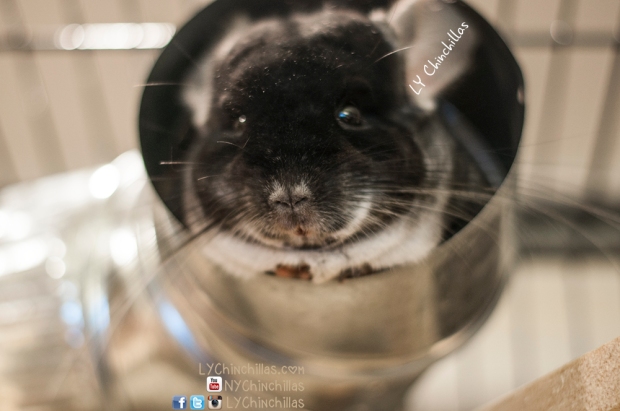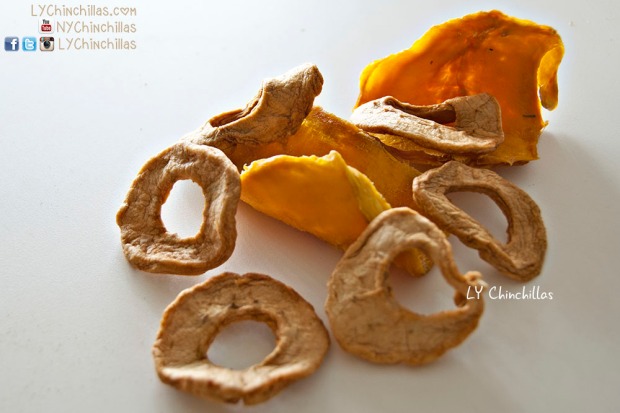Chins are adorable, there’s no way around it. Who doesn’t love chubby chinchillas all cuddled up in a cuddle circle? But what do you do if there’s trouble in chinchilla paradise? What happens when chinchillas start fighting, barking, yelling, or attacking one another? There are a few different types of situations and ways to handle them that encourage safety and promote a peaceful living situation.

To preface, I’ll offer some fundamental advice for current and future chinchilla owners: please do not purchase a chinchilla in the hopes that he or she will cuddle with you – 90% of the time, this won’t happen. Chinchillas are a ton of work and have quite a few requirements for a healthy, happy life. Placing your hopes and dreams for who your chinchilla will ‘become’ or goals for how he or she will behave in relation to your expectations won’t work out well for either party. Secondly, please do not purchase an additional chinchilla for an existing chinchilla in the singular hope that your current chinchilla will have a new best friend – it’s a 50% chance that they will have to live separately, oftentimes for their entire lives – that means double the cages, double the play times, double the bonding efforts. Building up an idea in your head that your chinchilla needs a friend is potentially selfish and untrue – oftentimes, it results in disappointment. If you would like another chinchilla, you should make that decision for yourself as a capable and loving owner that is ready to take on an additional responsibility, recognizing the risks of potential disharmony in your existing chin-family.

So far in my experience, I have had two major chinchilla-to-chinchilla relationship problems arise. First, the slow, eventual, and final separation of my two male chinchillas, Mitty and Muff. Second, a recent scare between my mosaic sisters, Lulu and Fifi. Sweetheart Koko, as you may have guessed, has never needed a soul to make her happy self any happier, so she has always been on her own in that way.

When I first welcomed Mitty and Muff to my home, Muff roughly 6 months after Mitty, they were pretty great friends. They were around the same age and still quite young, under a year old. They shared a double-level cage and had a grand time, swapping stories about their kit days and demolishing shredded wheaties as a team. Their breakup was gradual, building up over time and finally resulting in permanent separation. It began with a few barks every few days, perhaps a scurry in the cages. There was no lost fur, no broken skin, no weight loss, no physical injuries, and both kids were still consuming and behaving quite normally aside from the one-offs. This continued for two months. In the third month, the frequency of their one-offs became less like aberrations in behavior and more like a consistent flow of small arguments. We even separated the cages with a partition, but Muff would burrow and dig and squeeze his way through the 1″ gap just to cuddle with Mitty. It was a back and forth of likes and dislikes, of cuddling and arguing, of love and hate.

One day, Muff was squealing at the top of his lungs and going full Batman towards Mitty, chasing him around the cage. I decided, that was it. The next day, they each got their own cages and have been separated ever since. It was clear that the escalation was not going to lead anywhere but to a potentially violent place. An affirmation came a few months later, after they had settled in to their new living situations and made peace with their solitude. I was tidying up Muff’s cage while he was still in it and Mitty had a brief playtime. While Mitty was standing outside Muff’s cage, Muff went crazy trying to attack him – although he would not have been able to reach his nemesis, I put my hand up to block him from the wire mesh and he chomped down on my finger as if he was trying to tear it apart. Luckily, although the bite was deep, I was fine and so were they. I don’t blame myself for that situation, but I am thankful that it occurred. Muff is an extremely gentle chin, as is Mitty. I was able to learn that their problem was not inherent in their personalities, but rather brought out by one another. From that point on, they have had 100% security from one other and have never been able to make future contact – and they’ve been very thankful for it. They have grown into fine young men and flourish as their best selves without the conflict of an opposing personality.

Lulu and Fifi, on the other hand, are sisters. They cuddle and groom and play all the time. They’ve been great for years, but more recently, they had been having their share of problems, kacking and chasing one another around their shared cage. Before anything serious happened – that is to say, before any rough-housing or physical fighting – I took Fifi out, as it appeared she was the aggressor in most of their arguments. I placed her in a temporary cage and set it by the foot of their shared cage. I gave them a two day time out from one another, but they were always able to talk through the cage bars and sleep next to each other. They were given some time together every day to groom and say hello; it was evident that they missed each other greatly (surprisingly, Fifi more-so than Lulu). The time apart was healing for them, and since Fifi returned to their space, it’s been smooth sailing. As an owner, I’m always mindful that the bond between all of us needs to be built back up before returning to a comfortable place of trust and a solid sense of safety. It’s important to note that blood relationships are not immune to chaos or disorder, and require TLC from all parties to keep the good vibes going. The good thing about these girls (and luckily, how it played out with the boys) is that they will display their feelings vocally and behaviorally prior to lashing out physically.

It’s important to keep in mind that these examples of broken bonds and healing bonds are my stories, based solely on the disposition and personalities of my chinchillas. I have heard several horror stories from fellow chinchilla owners of pure physical violence emerging with minimal warning signs, leading to devastating injuries for their weaker chinchillas. The best advice I can give is to take great care to properly introduce chinchillas over a period of many weeks prior to allowing them to live together, monitoring their behavior constantly, and remove any aggressive chinchilla into a separate cage immediately upon any suspicion of anger or danger (weighing your chinchillas can be a good way to catch a bully by determining who is able to consume more and overall weight trends). Removing a bonded pair from one another for any reason will require the proper re-introductions to prevent conflict, and of course, there is no guarantee of rebuilding bonds.

Play it safe at all times and prepare for permanent separation, with extra cages, water bottles, and supplies. Keep a bottle of Blu-Kote for potential scratches or shallow bites. Always have the numbers of a trusted exotic vet and emergency vet on hand for potential emergencies. Remember, when it comes to your chin-kids, it’s better safe than sorry! You may have to mourn the loss of a bond, but it’s important to give each animal their full right to live a long, happy, and healthy life. You’re much better off enjoying their company one-on-one than having to deal with a crippling injury, or worse. In fact, you may get to know them better than you ever could have if they were still bonded. 🙂


LY Chinchillas Treat Donation
Donate healthy, delicious treats to LY Chinchillas to help keep our content going!
$5.00








